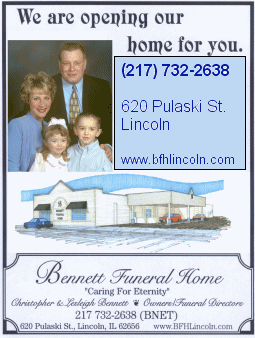|
The woolly bear caterpillar legend is one of the most often
quoted. The banded woolly bear is black at both ends and has
orange and black stripes in the middle. The legend says the more
stripes that are black in the middle, the more severe the
winter. Science says more dark stripes are dependent on moisture
conditions in the area and the age of the caterpillar. There are
also nine U.S. species. The banded woolly bear is the larvae of
the Isabella moth. Other moth larvae in the group have different
colored caterpillars. Of course, the first frost can be
predicted by the singing of cicadas. "Six weeks from the first
song of the dog day cicada comes the first frost." Boy, I hope
not. That would mean tomorrow is going to be quite chilly. A
yellow butterfly flying in your face also means a frost, but
this time it will be in 10 days.
There are some more meaningful signs. The buckeye trees have
started losing their leaves in large numbers, combines have
begun moving in the earliest corn fields, and ragweed season is
here.
If you're one who usually suffers from the fall allergy
season, you know the symptoms all too well. Many people blame
goldenrod as the culprit, when it is mostly ragweed problems.

Giant ragweed
In our area, we have two types of ragweed. The most
noticeable is giant ragweed. Giant ragweed, also called
horseweed, can grow well over 10 feet tall. It is very
noticeable as one of the few weeds that grow taller than our
Illinois corn. The other type of ragweed is common ragweed. It
is generally less than 6 feet tall and not nearly as noticeable.
[to top of second column]
 |
 Ragweeds tend to bloom in late summer. The period can range from
mid-August to mid-September. They put out a lot of pollen when they
bloom. The amount of pollen is one problem, but the shape of the
pollen is the other. The shape of the pollen is more jagged and
sharp along the edges, making it more of an irritant than other
types of pollen.

Add in the usual ragweed problems, alternating wet and dry
conditions, and early leaf drop, and we have the recipe for an
allergy sufferer's nightmare. There are also several leaf molds that
are at work, and that compounds the allergy problem.
What can you do? One, try to eliminate ragweed in your particular
area. Two, avoid the mid- to late-morning period in the great
outdoors. This is when more pollen is released. Three, you can stay
indoors (or in office or car) with air conditioning. And, if your
problems are particularly troublesome, talk to your doctor. There
are prescriptions and over-the-counter products that can help
alleviate at least some of the symptoms.
This has probably been one of the worst years in history for the
problem. This is a couple weeks earlier than normal and even
eclipses 2004. So take some comfort in the fact that next year will
probably be better, and be reminded that fall is on the way.
[John
Fulton, unit leader,
University of Illinois Extension,
Logan County Unit] |